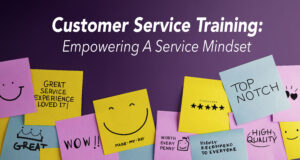Top Banking Issues Today For Keeping Up With Customer Expectations

The banking industry is undergoing a significant transformation, driven by technological advancements, changing customer expectations and evolving regulatory landscapes. From cybersecurity threats to the rise of credit unions, from the growing importance of customer experience to the challenges of digital transformation, banks must adapt and address these issues to remain competitive and build trust in an ever-changing financial landscape.
Incidents involving banks like SVB and First Republic Bank, coupled with the emergence of new banks, have placed many regional and community banks in a precarious position. Others are feeling the pressure to seek buyers and retain customers who are moving their money to perceived “safer” established banks.
These changes are happening amid the growth of credit unions — there are now more credit unions than banks in the U.S. — which have several advantages due to their nonprofit status. For example, credit unions can be nimbler and more overt about meeting members’ needs and maintaining loyalty. They can also offer higher interest rates, lower loan rates and fees. Banks continue to have their own advantages as well, though, including larger asset bases and, typically, a larger array of offerings.
One thing is certain: Across the banking spectrum, building and maintaining trusted advisor relationships, as well as demonstrating integrity and relationship skills, has become critical — and all financial institutions have work to do in this area. An Accenture study found that fewer than 30% of people surveyed said they trusted banks “a lot” to look after their financial well-being, down from 43% just two years prior. What’s more, only 30% scored their bank’s customer service at least 9 out of 10. These kinds of data points show how quickly trust can evaporate.
While today’s digital, on-demand, anytime world means customers are more likely to have financial relationships with multiple providers and often less likely to engage in face-to-face interactions with their bankers, the expectation for a personal, positive overall customer experience isn’t going away. In fact, it’s becoming one of the most important ways banks can strengthen trust and differentiate themselves.
Here’s a closer look at just some of the top banking issues today and how financial institutions can pave the path to future success.
Creating a Customer Experience (CX) Culture
McKinsey’s research shows that around 60% of customers currently trust that their primary bank will be helpful in navigating the next financial downturn. This jumps to over 80% for customers who report high satisfaction with the customer experience their bank delivers.
Prioritizing a customer experience culture is critical for staying competitive and maintaining and growing wallet share, whether the economy is in a boom or bust cycle. McKinsey data shows that improving CX creates “stacked wins” of higher returns, faster growth and lower costs. It also helps guard against switching. For example, research from BAI showed that 73% of Gen Z customers would switch banks for a better mobile/digital CX. These customers are less loyal and more open to spreading their banking business around, which means banks will have to continue to work harder at differentiating themselves on experience.
Banks and credit unions are slowly evolving to customer segmentation to get to know their customers better, following the example of retailers like Target that have used segmentation well for many years. But the layers go deeper than just segmentation.
Staff need to focus on the financial health of customers by leveraging their deposits and transactions data, credit data and other information — and they need to be giving the customers proactive advice on how to improve their positions. By demonstrating you are invested in their financial strategy, not just their banking transactions, you build trust. It’s more than just providing personalization; it’s about personal conversations.
For many banks, this will mean upgrading your questioning model. It’s also important to recognize that a person’s behavior style influences how they communicate, make decisions and relate to others. When customer-facing employees understand their own style as well as that of their customers, they can better understand needs and create more powerful, mutually productive relationships.
Another fundamental part of this process is doing the work to understand where the customer experience begins and ends, and all of the points in between. To deliver a consistent experience that will keep customers loyal, banks need to map the entire customer journey from first touch through to acquisition to loyalty, and then focus on nurturing those relationships at every step.
Creating a customer experience culture is an ongoing process that everyone has to take responsibility for. It’s not a quick, check-the-box process, but the payoff is worth it. Research conducted by FT Longitude confirms that the banks focused on understanding and addressing real-time customer needs, personalizing the experience and building trust will be ahead of their competitors in a host of ways.
Leveling Up the Omnichannel Customer Experience
Digital banking is undoubtedly the future, and banks must invest in technology that allows them to meet customers where they are. At the same time, people still want the human experience. And each and every one of those human interactions becomes much more consequential in this environment.
With banking customers making fewer visits to a branch, services and interactions have to be seamless across every channel. When actual human interactions do occur, the quality of the experience matters more than ever. The omni-channel consumer expects everything to be instantly available, with no gaps in the brand experience. The question financial institutions have to consider is whether or not their entire team is willing, able and aligned to consistently deliver on this promise.
The Accenture study cited above noted that “digital channels are functionally correct but emotionally devoid. They don’t help a bank turn a transactional relationship with a customer into a genuine human connection.” As a result, banking relationships become more transactional and impersonal. Yet more than six in 10 customers still turn to branches to solve specific and complicated problems. They want to have genuine conversations with their banks. In fact, 67% of those in the Accenture study said they like seeing branches in their neighborhood as it portrays the stability and availability of their banks.
The key is knowing how your customers want to bank and then giving them the power to interact seamlessly across all channels. Banks can’t swim against the tide of digital banking. Instead, focus on helping customers migrate and educating them on the new technology, and reward employees who redirect customers to digital channels. Building human interaction into your digital experiences helps customers adapt, learn and build trust.
Investing in the Human Aspects of CX
Most community banks compete on the customer experience as their brand’s differentiation. Many banks lead with CX based on customer demand. Yet professional development and training in this area is often ignored or greatly lacking. There’s typically a lack of structure when it comes to learning (often a one-and-done) or ability to share institutional knowledge, mentor and coach people to reinforce and model the behaviors they want customers to see.
According to the FT Longitude study, 61% of banking executives say expectations for customer experience are continuing to rise, and yet 45% admit they are struggling to keep pace. What’s more, half of banks reported being unprepared for the impact a recession would have on their customer service. Now is the time to assess the capability and willingness of your team and ensure you’re placing as much a priority on their development as you are on their technology counterparts. Investing in areas like robust onboarding, consistent coaching, issue resolution training and customer journey mapping is only going to become more critical going forward.
Increasing Products per Household
Financial institutions overall have struggled with cross-selling, in part because the approach to cross-selling isn’t hitting the mark. Banks and credit unions need a new mindset of customer cultivation that includes growing their relationships from simple accounts to loans, investments and business banking. To do this, they’ll need to move away from selling products to solving problems, and this requires employees who have a strong commitment to creating customer value rather than just filling orders and requests.
Beware that pushy sales models and customer service scripts aren’t going to cut it. When it comes to the human interactions, customers want to talk with someone who will do the work to understand their needs and help them make decisions that are in their best interest, not someone who’s trying to force a sale. What’s more, affluent banking and credit union customers generally insist on premium service and tailored, expert advice — and moving these affluent or mass-affluent customers from a detractor to a promoter is worth roughly five times the economic value of turning mass-market customers into promoters. To grow wallet share and create more loyal affluent customers, banks will have to do more than train people to sell; they’ll have to change mindsets about what selling is.
Nurturing Small Businesses
One third of all SMB do their banking business with branches, yet most branches neglect this segment even in the face of significant risk (and opportunity?) of switching banks. With digital banking, this under-served market has more options and is not limited to local banking relationships. But at the same time, we know that “buying local” resonates with buyers, including in SMB banking.
Since we know buying is emotional, the opportunity for banks to deepen person-to-person relationships and trust with small businesses through a more in-person customer experience can be the sword they draw in the face of larger banking being perceived “safe havens.”
Communication matters. One survey by the National Federation of Independent Businesses found that only 41% of of small business owners said they talk to someone at their financial institution about the business’ finances at least once every six to 12 months.
Banks and credit unions that succeed most often approach the SMB market as an advisor and partner, rather than a simple transaction processor. They succeed by:
- improving ease of use, communication and being more mobile-banking friendly. Younger SMB leaders expect things like chat functionality and virtual meeting technology.
- becoming seen as more innovative (only 56% of SMBs view large banks as innovative, but the number is even lower- 32%- among community banks)
- understanding customer needs (in part by asking the type of questions that will lead to more wallet share)
- Become viewed as a value-added partner. According to Aite Group, only half of SMBs view their financial institution as a true partner. Most small business banking relationships are based on credit. But many banks fail to expand services beyond a single loan or credit line.
For most small businesses, the bank relationship starts with setting up their operating accounts and establishing credit over time, but these products barely scratch the surface of the customer’s overall financial needs. To maximize the mutual value of the relationship, banks need to go for the trifecta: the small business relationship, the personal relationship and the wealth management relationship. This is something that Visa has perfected over the years with their consumer and business products, along with their relationship with the horse racing Triple Crown.
By operating more strategically, becoming more proactive in communication with SMB customers in ways that uncover needs and increasing the ease of doing business, regional and community banks and credit unions open themselves up to a host of growth opportunities.
Attracting, Growing and Retaining Talent
It’s worth noting that customers aren’t the only ones who care about trust and the experience. Banks that want to continue to attract and retain talented, committed people will need to show them that they are trustworthy, operate fairly and ethically, and care about the workplace culture and employee experience.
Smaller and regional banks tend to dominate the big ones when it comes to both employee experience (EX) and customer experience (CX). It’s not surprising that banks with strong customer experiences are rooted in strong employee experience. When employees have a sense of purpose and belief in what they’re doing and understand how they’re contributing to the customer’s experience, they’re more engaged, energized and motivated to go the extra mile for their customers. And just like their customers, they’re also more likely to stay with the bank.
Hiring and staffing, especially for front-line roles, has been a persistent issue that has only become more challenging in the post-pandemic environment. Research from BAI shows that acquiring and retaining top talent is now one of the top 3 issues banks face. Because the staffing issues persists, there are more expectations being placed on tellers, call center agents and those on the front lines. Banks need to be focused on developing this essential group to have both the skill and will to serve as problem-solvers for their customers, asking the type of questions that will uncover new opportunities.
Keep in mind that, to solve one of the top banking issues today, attracting talent in this increasingly tight labor market requires a solid cultural “offering,” part of which should be “our commitment to training and developing you.” By investing in employee development and robust onboarding, banks will become employers of choice for the talent they need to build customer loyalty and grow over the long term. And in the process, they’ll build a strong workforce capable of delivering exceptional customer experiences and adapting to evolving customer needs.
The bottom line: It’s all about people. Find the right people first, then the right technology and processes to make your impact scalable.
Growing the Leadership Pipeline
Mergers and acquisitions are having a big impact on the marketplace, and bank customers are feeling the impact. Considering the fact that 4.5% of all U.S. banks today are selling, succession planning is becoming critical as senior leaders look to retire.
To help buoy the odds of a successful M&As, banks need to invest in high-performing leaders who are committed to coaching, developing a common language about sales and service, and building a values-based culture. At the recent Acquire or Be Acquired banking conference, 22% of attendees said culture and talent are the top issues when undertaking M&A.
The best, most successful mergers are those with common traits and overlapping values, and this doesn’t happen by accident. Successful M&As start with a CEO who shares a compelling vision and value proposition and then demonstrates how they’re invested in developing the people across the organization to make it happen. Develop a cultural playbook in advance, including an org chart that will take you from current state to “dream state.” Then you can develop an employee engagement and training and development plan that will support that dream state and get everyone on board with it.
Creating a Sales Culture
What many of these trends point to is the need to align service and selling so that the organization can maximize every customer interaction. Many financial services leaders and front-line employees alike struggle with this idea, though, because they worry that it will require manipulative sales tactics and drudge up other negative sales stereotypes that are in direct opposition to being service-oriented. As Robert Blumberg, CEO of Wauna Credit Union, told us, “We don’t want the member to leave the credit union not feeling good about the product or service they purchased. And likewise, we don’t want our employees to feel badly about what they’re doing. You have to believe in what you are doing and really embrace it.”
He found that a sales culture supported by a values-based selling process and effective manager coaching actually strengthened the banking service culture while delivering more value to both the bank and the customers. Not only that, the team comes to work every day feeling good about what they do. Now that’s an investment that will pay off time and again.

Executive Partner
Related Blog Posts



